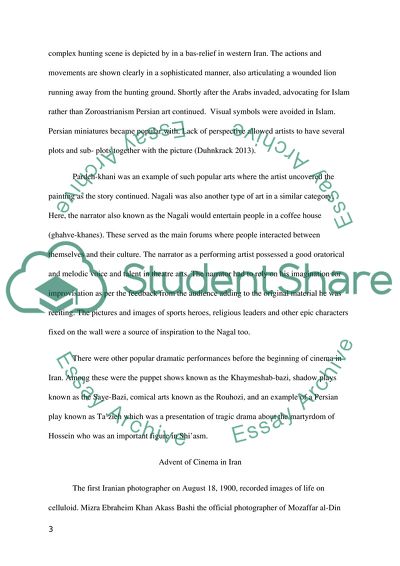Cite this document
(The Main Features of Iranian Cinema Before and After the Islamic Revolution Coursework Example | Topics and Well Written Essays - 2500 words - 25, n.d.)
The Main Features of Iranian Cinema Before and After the Islamic Revolution Coursework Example | Topics and Well Written Essays - 2500 words - 25. https://studentshare.org/visual-arts-film-studies/1841405-essay
The Main Features of Iranian Cinema Before and After the Islamic Revolution Coursework Example | Topics and Well Written Essays - 2500 words - 25. https://studentshare.org/visual-arts-film-studies/1841405-essay
(The Main Features of Iranian Cinema Before and After the Islamic Revolution Coursework Example | Topics and Well Written Essays - 2500 Words - 25)
The Main Features of Iranian Cinema Before and After the Islamic Revolution Coursework Example | Topics and Well Written Essays - 2500 Words - 25. https://studentshare.org/visual-arts-film-studies/1841405-essay.
The Main Features of Iranian Cinema Before and After the Islamic Revolution Coursework Example | Topics and Well Written Essays - 2500 Words - 25. https://studentshare.org/visual-arts-film-studies/1841405-essay.
“The Main Features of Iranian Cinema Before and After the Islamic Revolution Coursework Example | Topics and Well Written Essays - 2500 Words - 25”. https://studentshare.org/visual-arts-film-studies/1841405-essay.


